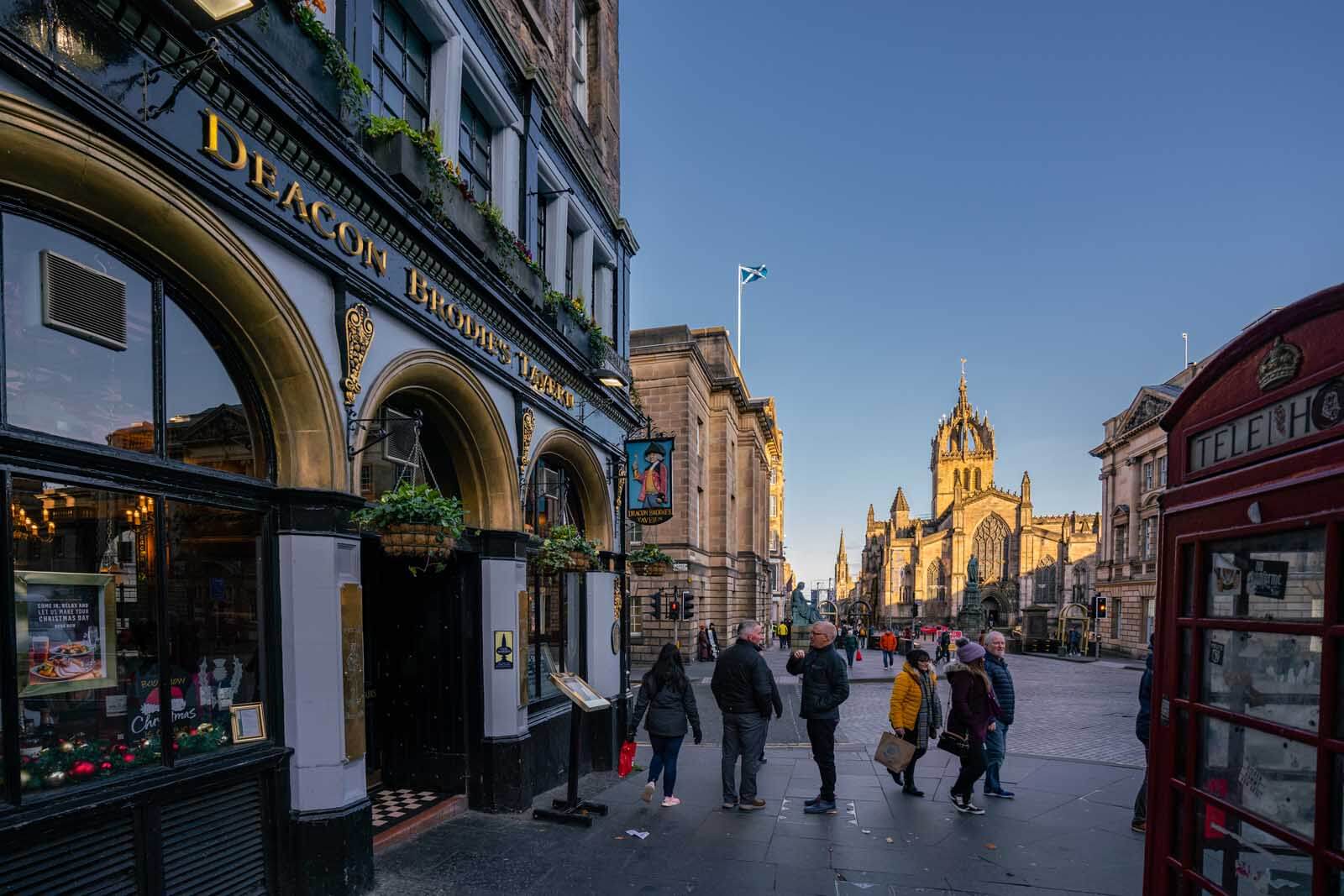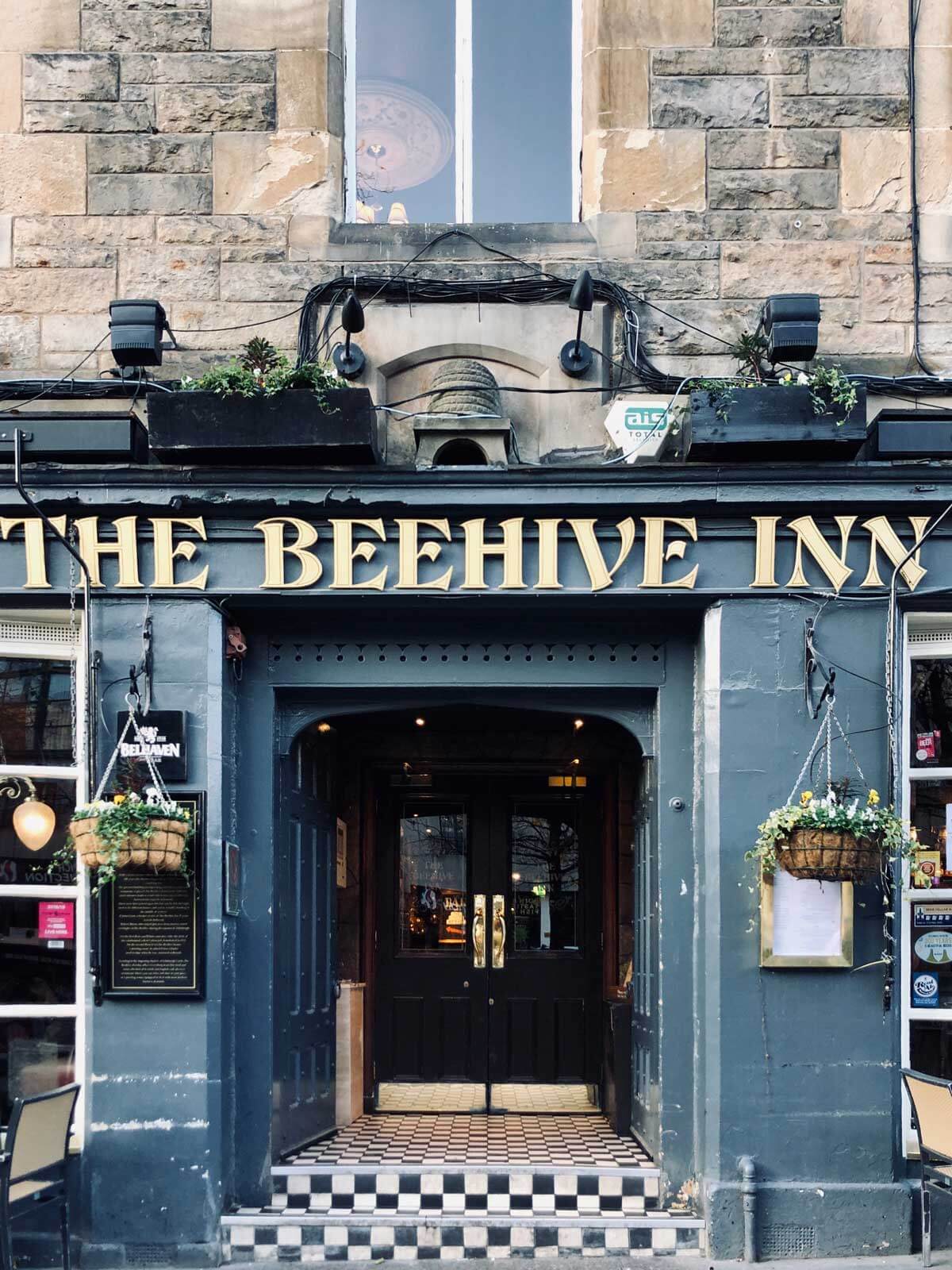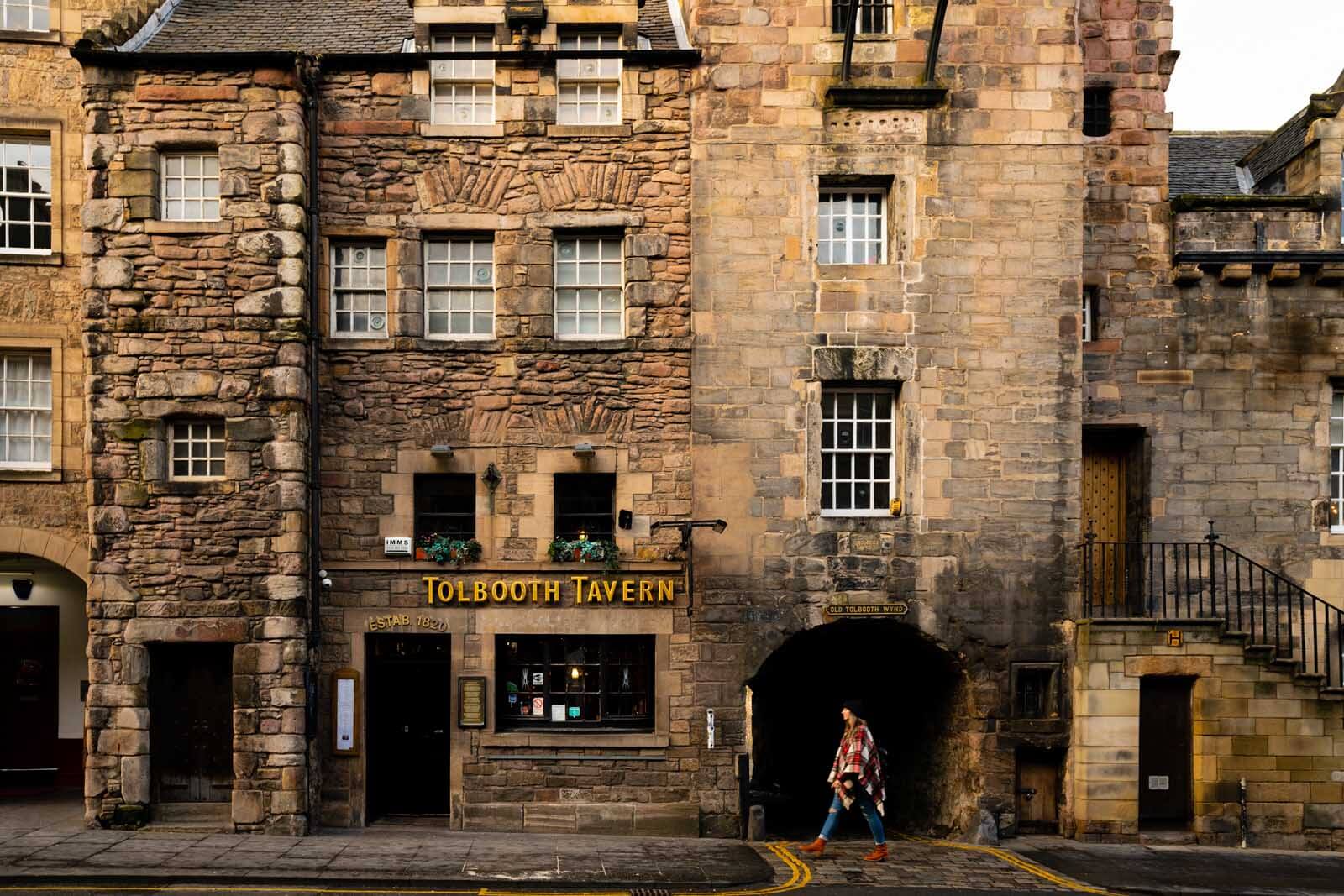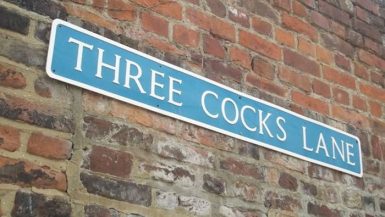A Slow Stroll Through Time: An Edinburgh Pub Crawl of the Oldest Locals
Edinburgh wears its age with swagger—the soot-dark stone, lanes that dogleg unexpectedly, and doors that open into centuries. If you’re the kind of traveler who likes history with a head on it, there’s no better classroom than the city’s old pubs. Tonight’s crawl—more saunter than sprint—threads six storied houses where the walls have soaked up everything from royal gossip to Jacobite whispers. We’ll stop at Deacon Brodie’s Tavern, The White Hart Inn, The Beehive Inn, Greyfriars Bobby’s Bar, The Doric, and The Tolbooth Tavern. Along the way, we’ll raise a glass to their histories and note just how long each has been pouring.
1) Deacon Brodie’s Tavern — Double Lives on the Lawnmarket

The Royal Mile pinches at Lawnmarket, and on the corner, the painted sign of Deacon Brodie’s Tavern swings in the breeze—respectable gentleman on one side, masked thief on the reverse. It’s a visual wink at the tavern’s namesake, William “Deacon” Brodie, the 18th‑century cabinetmaker and city councillor who moonlighted as a burglar—one of the inspirations behind Robert Louis Stevenson’s Jekyll and Hyde.
The pub itself opened in 1806, and the interior keeps that old-Edinburgh mood with its decorative wooden ceiling and snug corners. Brodie’s story reads like a moral play staged for the Old Town: locksmith by day, key-copying cat burglar by night; caught after a botched raid and hanged in 1788 at the Old Tolbooth before a crowd of thousands. The alley called Brodie’s Close nearby still remembers the family name.
How long it’s been open: Since 1806, which makes it about 219 years in 2025.
Order this: Start easy with a malty Scottish ale before the walk downhill. The story does the heavy lifting here—no need to sprint at stop one.
2) The White Hart Inn — Five Centuries Beneath the Castle

Slip down the hill into the Grassmarket and you’ll meet The White Hart Inn, a compact warren of beams and low ceilings that’s said to be the oldest pub in Edinburgh. The claim is carefully phrased because “oldest” is hotly contested in Scotland, but written records on this site go back to 1516, while the building above ground largely dates to 1740. Burns drank here, Wordsworth passed through, and more darkly, Burke and Hare are said to have recruited at least one victim from this very room.
If you fancy the macabre, staff will happily point you to the cellar—only the foundations are truly 16th‑century—where tales include disembodied legs and shadowy figures drifting past casks; whether you believe it or not, it’s clear the White Hart has been licensed on this spot for longer than many countries have existed.
How long it’s been open: Documented since 1516—that’s roughly 509 years as of 2025 (even though the current structure is mostly 18th century).
Order this: A dram and a chat about Robert Burns’ 1791 visit—local tradition has him penning “Ae Fond Kiss” that week. Raise an eyebrow if you like; the story has legs, and like many Edinburgh tales, it’s stuck.
3) The Beehive Inn — A 400‑Year Hive of Grassmarket Life

A few doors along sits The Beehive Inn, grander than its neighbors and guarding a multi-level “secret” garden out back with views to the Castle. Local histories place a coaching inn here from the 15th–16th centuries, and you’ll hear Beehive regulars speak cheerfully of “400 years” serving travelers and townsfolk in the shadow of the crags. The present building—that handsome, five-bay façade—dates to 1868 and is associated with architect John Paterson.
A former owner insisted Robert Burns lodged next door and slipped in for cockfights during his Edinburgh sojourn; it’s one of those persistent stories that color the Grassmarket’s long memory of fairs, livestock and public hangings. (You’ll find a simple gallows marker set into the cobbles just steps away.)
How long it’s been open: A drinks licence is thought to date back to the 16th century—well over 400 years—though the building you see is from 1868.
Order this: When the weather cooperates, carry your pint into the tiered garden and watch the Castle glow at sunset. A more “Edinburgh” moment is hard to find.
4) Greyfriars Bobby’s Bar — The Faithful Dog and the City’s Soft Heart

Climb Candlemaker Row toward Greyfriars and pause where Bobby, the wee Skye terrier, stands in bronze atop his fountain. Across the way is Greyfriars Bobby’s Bar, housed in the ground floor of Georgian houses that adjoin Candlemakers’ Hall (built 1722). The bar’s name comes from Bobby, who, legend says, kept vigil by his master John Gray’s grave for 14 years until 1872—a story that’s irresistible no matter how many times you hear it. The famous statue, by William Brodie, was unveiled in 1873.
As a pub, Greyfriars Bobby’s dates from 1893, making it “historic” in Edinburgh terms, even if not medieval; what it lacks in age compared to its neighbors, it more than makes up for in atmosphere and folklore.
How long it’s been open: Since 1893—about 132 years in 2025.
Order this: Something comforting and traditional; then slip into the kirkyard and tip your cap to Bobby and John Gray. Few places fold sentiment into a pub stop quite like this.
5) The Doric — Edinburgh’s Oldest “Gastropub” (With Bones from the 1600s)

Angle back toward Waverley and the North Bridge, and you’ll find The Doric on Market Street. It originates in the 17th century, a tenement‑style building that was adapted to pub use in the 18th century—evolving into what the owners dub “Edinburgh’s oldest gastropub.” The upstairs bistro has long been a favorite for deeply Scottish plates and a serious whisky shelf, while the ground‑floor bar keeps the hum of a city center local.
In truth, the Doric feels like a living essay in how Edinburgh renews itself: the stones are old, the idea of a “gastropub” is modern, but the core experience—good cheer in a sturdy room—hasn’t changed much since the ink dried on those first 18th‑century licenses.
How long it’s been open: Serving as a pub since the 1700s—well over two centuries—in a 17th‑century building.
Order this: A bowl of Cullen skink and a dram—classic, unfussy, and as local as the cobbles outside. If you’re collecting malts tonight, the Doric’s list rewards a slow read.
6) The Tolbooth Tavern — Where a Burgh Kept Its Keys (and Later Its Taps)

To finish, head down the Royal Mile toward the Canongate. The clock that juts out over the street marks the Canongate Tolbooth, built in 1591 as the administrative and judicial heart of the then‑separate burgh. The ground floor became The Tolbooth Tavern in 1820 and it’s traded as a pub ever since. Step inside and you’ll drink in a space that once handled tolls, courts and cells—where Covenanters were confined and at least one suspected warlock was said to have been exorcised by Sir Lewis Bellenden (the story has the deliciously Gothic ending you’d expect).
The rear section of today’s tavern started life as mid‑18th‑century housing; the front tells the true tale, with the turreted façade and that famous 1884 clock swinging over the Royal Mile. And if you want to fact‑check the “tolbooth” bit—the building’s civic past is well documented, and the museum upstairs (now The People’s Story) continues that thread.
How long it’s been open: As a pub since 1820—about 205 years—in a 1591 landmark.
Order this: Haggis, neeps and tatties with a wee whisky, then step back outside and look up at the clock—history literally hangs over you here.
Practical Route & Pacing (and How to Make a Night of It)
Here’s a gentle circuit that keeps the walking scenic and the story coherent:
Deacon Brodie’s Tavern (Lawnmarket, near the Castle) — begin at the top of the Mile, where the Jekyll‑and‑Hyde legend sets the tone.
- Deacon Brodie’s Tavern (Lawnmarket, near the Castle) — begin at the top of the Mile, where the Jekyll‑and‑Hyde legend sets the tone.
- Drop down into the Grassmarket for The White Hart Inn and The Beehive Inn—two stops, one square, five centuries of tales.
- Climb to Greyfriars Bobby’s Bar for a palate‑cleansing dose of sentiment and Georgian streetscape.
- Swing toward Waverley for The Doric (dinner is wise here).
- If your legs still feel lively, taxi or stroll down the Mile to the Tolbooth Tavern to end among 16th‑century stones.
Aim for a drink or half‑pint at each stop, share plates when you can, and keep an eye on closing times; these are busy, beloved houses and often buzzing deep into festival season. Most maintain late openings on weekends.
The Long View—Who’s “Oldest,” Really?
Edinburgh’s “oldest pub” question is a spirited debate because you can measure “old” in different ways: first licensing on a site (The White Hart’s 1516 records), oldest continuously operating building (the Canongate Tolbooth dates to 1591, though the tavern is “only” from 1820), or the earliest coaching-inn presence (The Beehive’s 16th‑century origins with an 1868 rebuild). City guides and local blogs will juggle these definitions; what matters most at the bar is that Edinburgh’s historic pubs have carried on serving through plague, reform, rebellion, Enlightenment, empire, and Fringe month—and are still here to tell the tale.
Snapshot Summary — Dates & “How Long”
- Deacon Brodie’s Tavern — opened 1806 (≈ 219 years).
- The White Hart Inn — records from 1516; present building 1740 (≈ 509 years since first record).
- The Beehive Inn — coaching inn origins in the 15th–16th centuries; present building 1868 (license on site 400+ years).
- Greyfriars Bobby’s Bar — dates from 1893 (≈ 132 years).
- The Doric — 17th‑century building, pub from the 18th century (well over 200 years as a pub).
- The Tolbooth Tavern — tavern since 1820 in a 1591 tolbooth (≈ 205 years as a pub).
One Last Toast
If you listen closely as you wander from door to door, the Old Town will whisper back—the thump of hooves under the Beehive, the scrape of a coach arch beside the White Hart, the click of Brodie’s keys, the tolling clock above the Tolbooth, and the dog’s soft paws at Greyfriars. Edinburgh’s oldest pubs are not museums; they’re living rooms. Mind your step on the close, mind your pace on the pints, and mind the doors as you slip back into the night—older by a few stories and happier for it.



